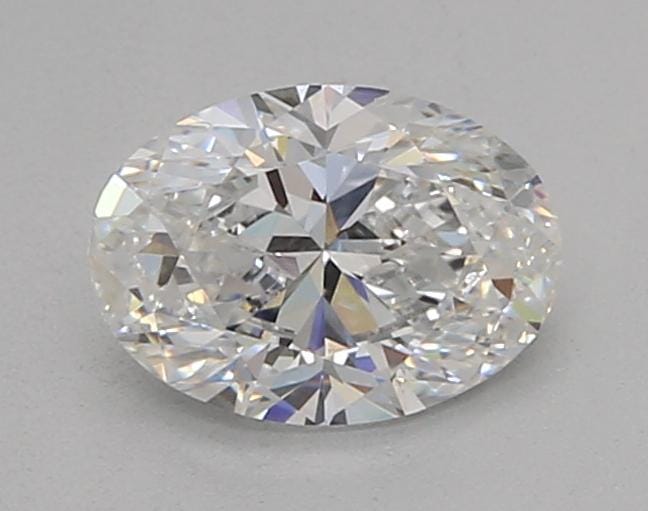Lab-grown diamonds are an eco-friendly and sustainable alternative to natural diamonds, gaining popularity among consumers who seek ethically sourced gemstones. These diamonds are created in laboratories, using cutting-edge technologies that mimic the natural processes that take place beneath the Earth’s surface. Among the most prominent methods for producing lab-grown diamonds are High Pressure High Temperature (HPHT) and Chemical Vapor Deposition (CVD). In this article, we will focus on HPHT diamonds, specifically the H1 technology, and explore how they are revolutionizing the diamond industry.
What are Lab-Grown Diamonds?
Lab-grown diamonds, also known as synthetic diamonds or man-made diamonds, are chemically identical to natural diamonds. They are composed of carbon atoms arranged in a crystalline structure, just like their mined counterparts. The key difference is that lab-grown diamonds are produced in controlled laboratory conditions, which significantly reduces the environmental and ethical issues associated with traditional diamond mining.
How are Lab-Grown Diamonds Created?
Lab grown diamonds hpht can be created using two main methods: High Pressure High Temperature (HPHT) and Chemical Vapor Deposition (CVD). Both methods replicate the conditions found deep within the Earth’s crust, but they differ in their approach.
- High Pressure High Temperature (HPHT): HPHT is one of the oldest and most widely used methods for producing synthetic diamonds. This process involves applying extremely high pressure and temperature to a small diamond seed in the presence of carbon. The carbon then crystallizes around the seed, forming a full diamond over a period of several days or weeks.
The HPHT process mimics the natural formation of diamonds deep beneath the Earth’s surface, where extreme pressure and temperature cause carbon to crystallize over millions of years. The method was first developed in the 1950s and has since evolved into one of the most reliable and efficient techniques for producing high-quality lab-grown diamonds.
- Chemical Vapor Deposition (CVD): CVD is a more recent technique that involves introducing a carbon-rich gas (usually methane) into a vacuum chamber. The gas is then heated to high temperatures, breaking it down into carbon atoms. These carbon atoms then deposit onto a diamond seed, forming a diamond layer by layer. The CVD method allows for more precise control over the growth process and can produce diamonds with fewer impurities.
HPHT Diamonds: The H1 Technology
The HPHT process is further refined with advancements in technology, one of which is the H1 technology. This innovative method has set new standards for creating high-quality lab-grown diamonds. The H1 technology combines state-of-the-art equipment and cutting-edge techniques to enhance the HPHT process.
Key Features of H1 HPHT Diamonds:
- Superior Quality: H1 HPHT diamonds are known for their exceptional quality, including high clarity, brightness, and color. The process allows for precise control over the growth conditions, ensuring that the final diamond is free from impurities and defects.
- Faster Production Time: The H1 technology speeds up the diamond-growing process, reducing the time required to create a high-quality diamond. This efficiency leads to a lower cost of production, making H1 HPHT diamonds more affordable compared to traditional mined diamonds.
- Ethical and Sustainable: Like other lab-grown diamonds, H1 HPHT diamonds are free from the ethical concerns associated with mined diamonds. The process requires no mining, minimizing environmental damage and promoting sustainability in the diamond industry.
The Advantages of HPHT and H1 Diamonds
- Eco-Friendly and Sustainable: One of the primary benefits of lab-grown diamonds, including those created using the HPHT method, is their minimal environmental impact. Unlike natural diamonds, which require extensive mining operations that can lead to deforestation, habitat destruction, and pollution, HPHT diamonds are made in a controlled environment with minimal waste.
- Cost-Effective: Lab-grown diamonds tend to be more affordable than natural diamonds because the production process is less expensive and does not involve the costly extraction and transportation associated with mining. The H1 technology further improves this cost-efficiency, making lab-grown diamonds accessible to a broader market.
- No Ethical Concerns: Natural diamond mining has long been associated with ethical issues, such as human rights violations, child labor, and financing conflicts. Lab-grown diamonds, including HPHT diamonds, offer a conflict-free alternative, allowing consumers to purchase diamonds with peace of mind.
- Customization Options: Lab made diamonds provide more flexibility in terms of customization. Since they are produced in a controlled laboratory environment, they can be tailored to specific shapes, sizes, and colors, giving consumers a greater variety of options.
Why Choose HPHT Diamonds Over Other Lab-Grown Diamonds?
While both HPHT and CVD methods can produce high-quality diamonds, HPHT diamonds are particularly favored for their similarity to natural diamonds. The HPHT process closely mimics the geological conditions under which natural diamonds form, which often results in diamonds with a more natural appearance.
Additionally, HPHT diamonds tend to have fewer internal stress marks and a more consistent crystal structure, making them ideal for those looking for diamonds with a high level of brilliance and clarity.
HPHT Diamonds and the Future of the Diamond Industry
As demand for ethical and sustainable products increases, lab-grown diamonds—especially those produced using the advanced H1 HPHT technology—are expected to play an increasingly important role in the diamond industry. With their reduced environmental impact, ethical benefits, and competitive pricing, HPHT diamonds are well-positioned to capture the attention of eco-conscious consumers and jewelers alike.
Furthermore, advancements in technology will continue to enhance the quality and affordability of lab-grown diamonds, further disrupting the traditional diamond industry. As consumer preferences shift toward ethical and sustainable choices, lab-grown diamonds will likely become an even more popular option for engagement rings, fine jewelry, and other luxury items.
Conclusion
HPHT diamonds, particularly those created using the innovative H1 technology, represent a significant advancement in the world of lab-grown diamonds. With their high quality, affordability, and ethical production methods, they offer a compelling alternative to natural diamonds. As technology continues to improve and consumer awareness grows, lab-grown diamonds will undoubtedly become a dominant force in the jewelry market.
Whether you’re looking for an engagement ring, a gift for a loved one, or simply want to make a sustainable choice, HPHT diamonds are an excellent option that combines beauty, ethics, and value.







More Stories
The Beauty and Brilliance of Lab Grown Diamond Necklaces
Lab Diamond Clarity Chart: Understanding the Key to Sparkle and Brilliance
Diamond Shapes Tips: A Guide to Choosing the Perfect Cut for Your Jewelry